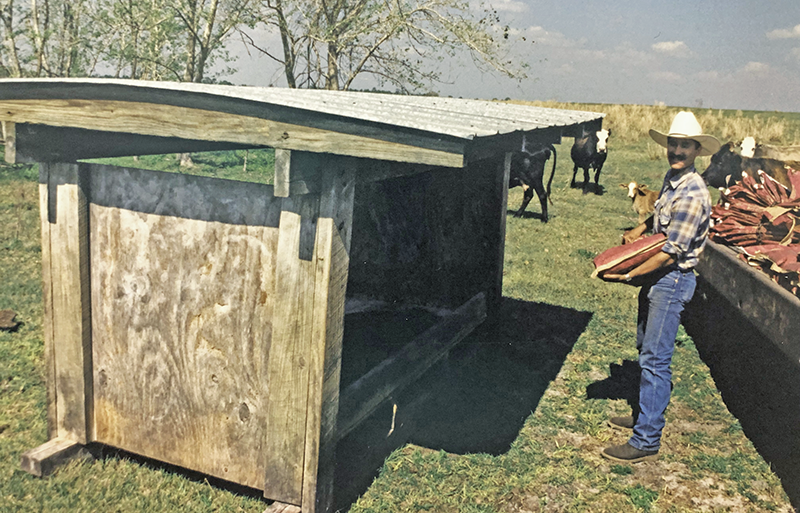
Summer often becomes a busy time of year for ranchers, but don’t forget to check mineral feeders to be certain that your cows are getting the amount of minerals they need. Photo credit and subject: Doug Mayo, UF/IFAS
–
Glenn Selk, Oklahoma State University Emeritus Extension Animal Scientist
Summer often becomes a busy time of year for ranchers (especially during haying season). Don’t forget to check the mineral feeders to be certain that they are supplying the minerals that your cows need. In some cases, medications may be recommended by your veterinarian to be included in the mineral mix. Cow calf operators will want to monitor mineral consumption closely to be certain that the label-recommended amounts are being consumed by the cattle. A “Veterinary Feed Directive” (VFD) will be necessary for antibiotic feeding in mineral supplements. Contact and work with your local large animal veterinarian about the appropriate VFD for your operation.
Placement of mineral feeders and blocks can aid in achieving optimum mineral intake. Place them in areas where cattle spend a lot of time. Minerals should be placed in loafing areas, near water sources, in shady areas, or any other location that tends be a popular place for the herd to congregate. A rule of thumb is to provide one mineral feeding station for every 30 to 50 cows. Check feeders at least once a week and keep a clean, fresh supply of minerals present at all times. A good feeder should keep minerals dry, be portable and hold up to abuse and corrosion. Open tubs are not adequate in high rainfall areas. Cattle owners can get receive additional help with calculating mineral intake with the “OSU Mineral Calculator” and the “OSU Mineral Consumption Record” sheets. To download these aids go to http://beefextension.com/pages/calculators and click on the appropriate items listed as either “Mineral Consumption Record” or “Program”
Choosing a mineral mix requires understanding of the animal’s requirements and the minerals available in the forages and feedstuffs available to the animals. Mineral needs tend to be area specific and change with soil type, fertilization rates, rainfall and many other factors. Mineral requirements also will depend on animal age and stage of production. An excellent reference source for Oklahoma beef producers about mineral supplementation can be found in the Oklahoma State University Extension Bulletin E-861 “Vitamin and Mineral Nutrition of Grazing Cattle.”
- Cotton Marketing News:Acreage Numbers are a Surprise – What Now? - July 11, 2025
- Gulf Coast Cattlemen’s Conference – August 8 - July 11, 2025
- Cotton Marketing News:USDA June Numbers—Neutral, Not Good but Not Bad - June 20, 2025
